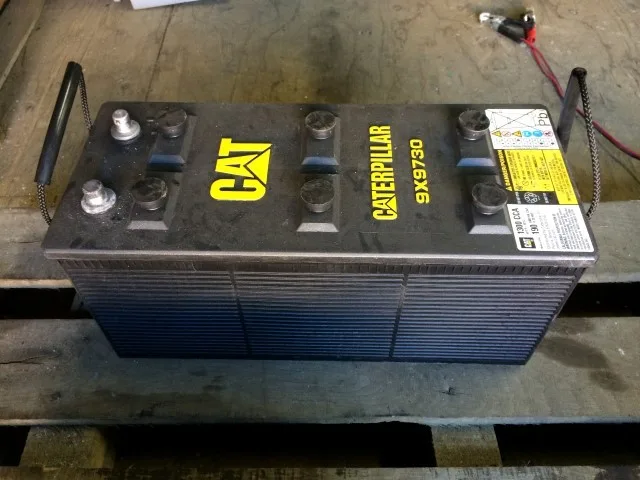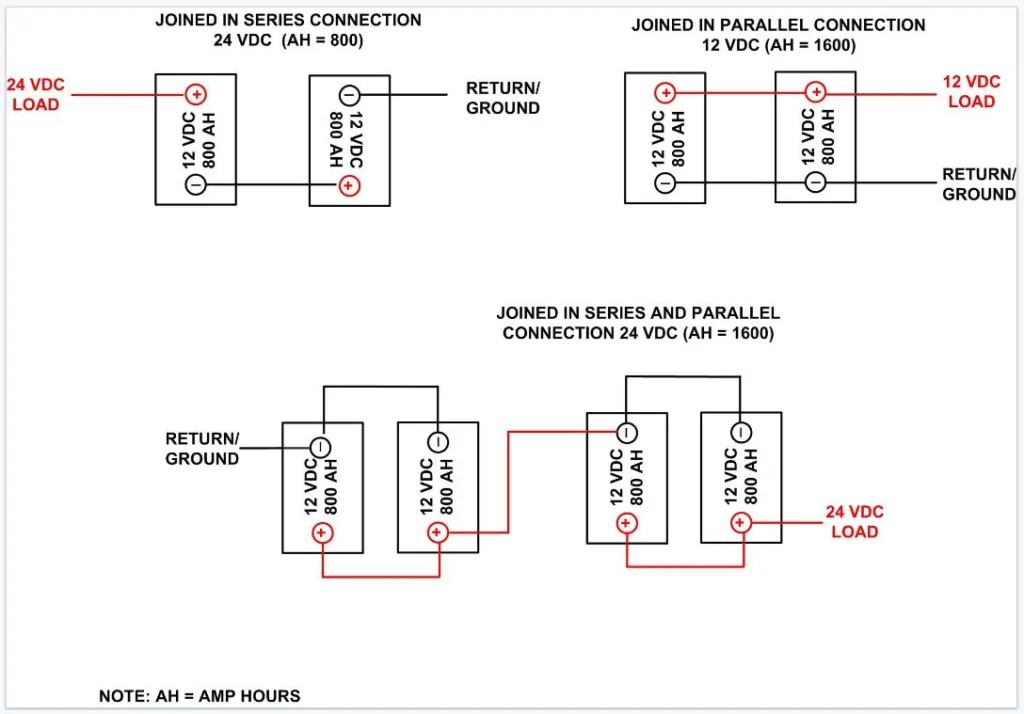
Batteries are an integral part of a generator set. Many generator service providers report the most common reason for generator failure is a failed battery. This article will provide information on styles of batteries available, battery connection (multiple batteries), selection, and maintenance of batteries.
Battery Information
Role of Batteries
The main role of emergency generator batteries is to provide power to the generator engine starter during a facility power outage. Depending on the configuration of the generator system setup, batteries can also provide:
- Power to the digital control panel.
- Power to ancillary panels, small motors operating on DC current, and any DC-supplied device within the enclosure during generator operation.
- Backup power to the secondary or redundant set when a primary battery source is used in an enclosure.
- Power to automatic louvers and vents, which are AC-powered when the system’s automatic transfer switch routes power to the grid.
Types of Batteries Used in Industrial Power Generation Systems
Most generator sets use a standard lead-acid battery. The two types available are:
- Maintenance-Free – Often referred to as a sealed battery. Electrolyte cannot be added or specific gravity tested.
- Conventional – Cells have individual caps for filling and testing electrolyte.
Better quality batteries, such as those recommended by generator manufacturers, use higher-grade materials, which can increase the price. Examples include:
- CAT – Most expensive but noted for best performance.
- Interstate – Offers field service.
- NAPA, Decca – Other battery options.
Common Sizes of Commercial Generator Batteries
Battery size is dictated by the generator size and configuration. Examples include:
- 4D and 8D Batteries – Common for larger generators (500 kW and above).
- Batteries can cost up to $500 each.
- Batteries are heavy.
- 3100 Series Batteries – Used for smaller units (30 to 150 kW).
- 535 Series Batteries – Used in mid-sized gensets (150 to 500 kW).
Connecting Batteries
Two or more 12 VDC batteries (depending on current requirements) are connected in a series. Smaller configurations require 12 VDC and may use one or more batteries. If a second set is required, they are connected in parallel.

How to Maximize Lifespan
To maximize the lifespan of a battery, consider the following:
- Purchase the correct size battery for the application.
- Maintain a log of the purchase date to track lifespan.
- Check the specific gravity of the electrolyte in each cell.
- Add the appropriate mixture of electrolyte and distilled water as needed.
- Ensure a trickle charge is available at all times.
- Test battery voltage and perform load tests at appropriate intervals.
Proper maintenance can result in a battery lifespan of up to three years or longer, depending on usage and application.
Charging
Batteries must remain fully charged to ensure the generator starts on demand. Options include:
- Manual Chargers – Require manual activation and shutdown.
- Electronic Control System Chargers – Provide on-demand trickle charging with automatic shutoff.
- Battery Banks for Multiple Generators – Include alarm systems, AC-to-DC converters, and DC-to-AC inverters for alarms and indications.
Determining Battery Size
To determine the correct battery size:
- Verify that the battery type is suitable for the application (e.g., high temp, low temp, hazardous environments).
- Check the generator manufacturer’s specifications.
- Compare the installed battery with manufacturer specifications and choose the better-performing option.
- Review research data to ensure accuracy before purchase.
How and Where to Buy
Consider the following when purchasing batteries:
- Lifespan of the battery.
- Specifications that meet or exceed the generator manufacturer’s requirements.
- Warranty details.
- Vendor reliability and delivery capabilities.
Generator Source
At Generator Source, we pride ourselves on shipping batteries that are either new or in good condition. A battery is considered to be in good condition if it meets the manufacturer’s specifications and has a low hour count.
Our shop uses batteries daily and maintains a stock of battery carts for large applications. We have multiple rooms dedicated to battery inventory.